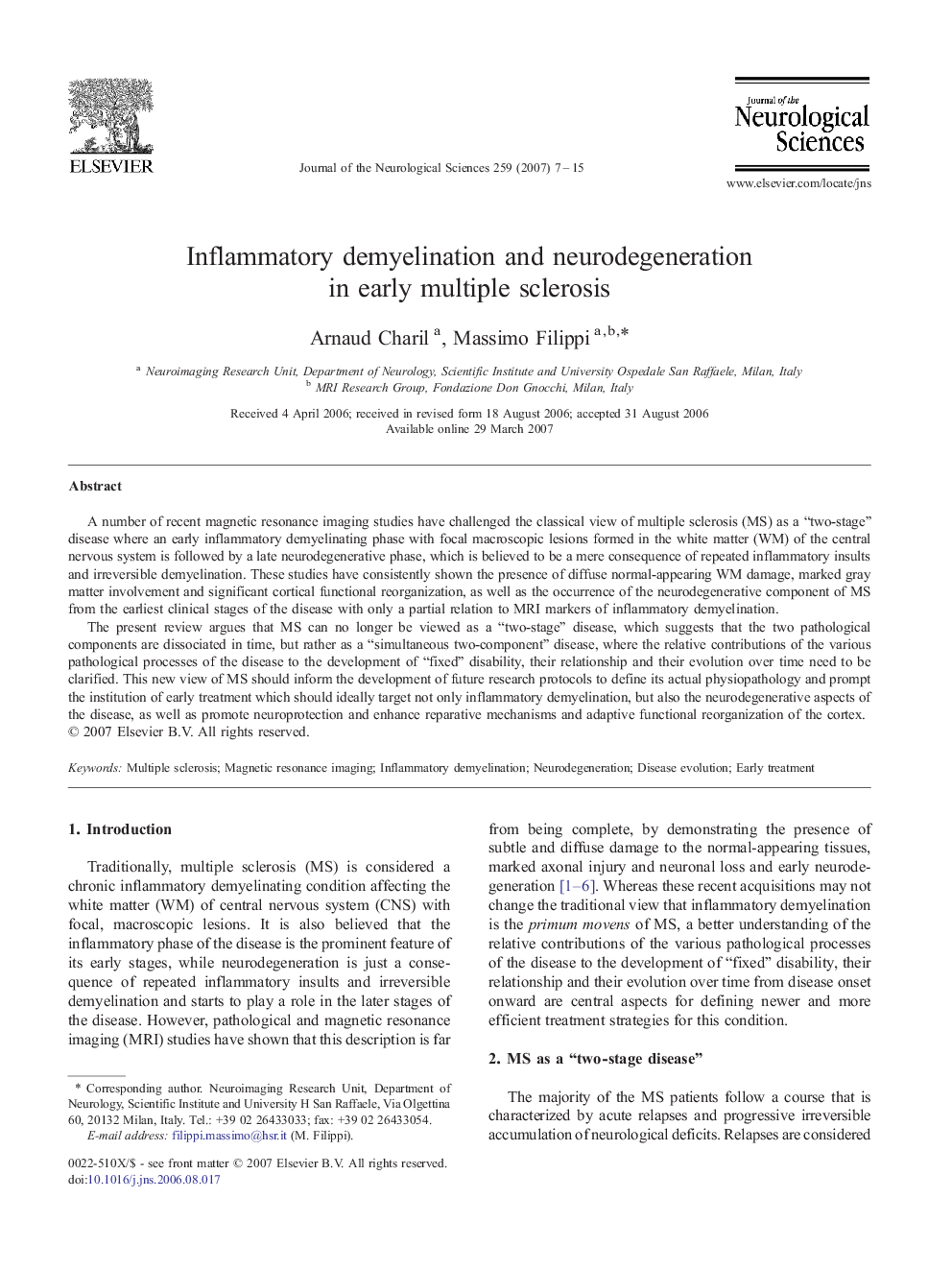| Article ID | Journal | Published Year | Pages | File Type |
|---|---|---|---|---|
| 1916225 | Journal of the Neurological Sciences | 2007 | 9 Pages |
A number of recent magnetic resonance imaging studies have challenged the classical view of multiple sclerosis (MS) as a “two-stage” disease where an early inflammatory demyelinating phase with focal macroscopic lesions formed in the white matter (WM) of the central nervous system is followed by a late neurodegenerative phase, which is believed to be a mere consequence of repeated inflammatory insults and irreversible demyelination. These studies have consistently shown the presence of diffuse normal-appearing WM damage, marked gray matter involvement and significant cortical functional reorganization, as well as the occurrence of the neurodegenerative component of MS from the earliest clinical stages of the disease with only a partial relation to MRI markers of inflammatory demyelination.The present review argues that MS can no longer be viewed as a “two-stage” disease, which suggests that the two pathological components are dissociated in time, but rather as a “simultaneous two-component” disease, where the relative contributions of the various pathological processes of the disease to the development of “fixed” disability, their relationship and their evolution over time need to be clarified. This new view of MS should inform the development of future research protocols to define its actual physiopathology and prompt the institution of early treatment which should ideally target not only inflammatory demyelination, but also the neurodegenerative aspects of the disease, as well as promote neuroprotection and enhance reparative mechanisms and adaptive functional reorganization of the cortex.
